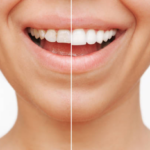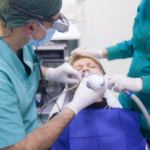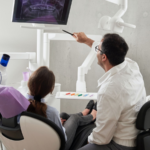Preventative care is an important component of overall wellness. You can go to the doctor for physicals and annual blood tests, but if you don’t get regular dental checkups, you’re missing out on an important aspect of healthcare.
Many patients do not visit the dentist until they have a problem because they do not have quality dental care monitoring their oral health.
By that point, what could have been a simple fix has become more complicated and frequently necessitates sedation dentistry to repair.
Defining the Terms in Sedation Dentistry
Sedation is a phrase used in medicine to describe any treatment that aids patients in relaxing. In most cases, the sedative procedures used in each field are comparable.
General anesthesia, a mild sedation technique that leaves the patient awake and attentive, or deep sedation, which renders the patient completely unconscious, are some of the options.
Why Sedation is Necessary
If your dentist suggests sedation as part of your dental treatment, there’s a good reason for it. Sedation isn’t necessary for every surgery. It’s a safe and effective way to help you get through something that would otherwise cause you pain or distress.
Without Sedatives, You Could Injure Yourself
Without sedation, your natural inclinations are to jerk and pull away, making the dentist’s job more difficult and maybe damaging yourself.
The Basics of Sedation
Sedation dentistry comes in a variety of forms, which your dentist will go through with you. The amount of sedation required is determined by a number of factors, including your medical history and the dental operations you are about to have done.
To offer sedation, dentists must undergo further training, and it is only done when a topical anesthetic isn’t strong enough.
Unconscious Versus Conscious Sedation
Many people are afraid of sedation because of stories and misconceptions. Let’s look at the many types of dental sedation and when each one is appropriate.
Local Anesthesia
A local anesthetic is the initial level of sedation that dentists consider. This is commonly utilized when patients have dental difficulties as a result of cavities, crown placement or modification, root planing and scaling, and so on.
You remain cognizant and attentive when under local anesthetic. It numbs the area that has to be worked on. The numbness lasts about half an hour to an hour on average.
Topical or Injectable Applications
This comes in the form of a topical gel that you spread on your gums or an injection into the gum area. It’s time to begin the dental operations on the schedule after you’re numb.
General Anesthesia
General anesthesia can help when stronger pain control is required or a patient has dental anxiety about the surgery. The entire body is relaxed and the patient is unconscious during this type of sedation dentistry.
This sort of anesthesia is frequently recommended by dentists for lengthy operations and dental work that requires special care. Complex dental treatments are easier to execute because the patient is entirely unconscious throughout the operation.
Your dentist may recommend this type of anesthesia for a variety of reasons. For example, if your anxiety is so great that you can’t sit still for a cavity sealant, or if you have a medical condition that prevents you from receiving other forms of sedation, general anesthetics can help.
Types of General Anesthesia
Experienced dentists administer most types of general anesthesia via IV sedation or a face mask. Throughout the procedure, the anesthesia is kept under tight control. When you fall asleep, you’ll recline in the dentist chair and breathe through a special tube.
For treatments like wisdom tooth removal or dental extractions, general anesthesia is frequently recommended.
Is a General Anesthetic Right For You?
This sort of sedation, however, is not recommended for people who have neurological issues, acid reflux, or organ illnesses. If you’ve ever had a bad response to an anesthesia, let your dentist know so they can alter your sedation.
Nitrous Oxide Sedation
Nitrous oxide, unlike IV moderate sedation, is an inhaled minimum sedation approach. If your anxiety is rising or you don’t want to deal with an IV, this dental sedation, often known as laughing gas, is a quick answer.
You breathe oxygen combined with nitrous oxide through a mask. The equilibrium of the gases is maintained throughout the process to ensure that you remain unconscious. The dentist is aware of the signals and can increase the laughing gas if you have a low pain threshold and the medicine wears off too quickly.
The majority of patients are unaware that they have had the operation until it is completed. After inhaling the laughing gas, they may feel sleepy or lose consciousness. It stops working as soon as you stop inhaling it.
Oral Sedation
Oral sedatives are an option if the operation does not require you to be asleep or if you are anxious about it. These medicines will provide you with moderate sedation for several hours, allowing the dentist to perform the entire procedure.
Halcion, a medication that functions similarly to Valium, is used by the majority of dentists. An hour before your procedure, you’ll take your oral medication. You’ll feel utterly relaxed and groggy after that period of time. You will, however, be able to reply to commands and questions.
Moderate relaxation and pain relief are provided by oral sedative medications. This makes oral conscious sedation an excellent option for a variety of dental procedures, including root canals. It does not, however, wear off as quickly as laughing gas. It’s possible that you’ll need someone to drive you home.
IV Sedation
IV sedation is the only sort of sedation that puts you into a deep sedation that all but the most vigorous acts can’t disrupt. The IV drip contains the same medications as the oral sedative. Moderate sedation isn’t enough if you wish to be unconscious to minimize dental anxiety or if you have a weak gag reflex.
The dentist will monitor your vital signs and alter your medicine as needed once you’ve fallen asleep.
Make an Appointment to Talk About Your Options
Don’t let the prospect of sedation dentistry deter you from seeking treatment for your dental health issues. Make an appointment with your dentist to discuss the many sedation alternatives available to you.
Remember that whether you require moderate oral sedation, deep sedation, or something else is determined by a number of variables. You may be storing “worst-case scenario” possibilities in your mind when they aren’t required.
Feel free to bring a list of questions and concerns to your visit. Other patients have already done so!
Our Dentistry Procedures Are Safe and Approved
The American Dental Association and the Food and Drug Administration have both approved nitrous oxide, oral sedation dentistry, and any medicine you’re given. The type you’ll get will be suited to your health, procedure, and any insurance concerns you may have.
We want to assist you in managing your dental requirements in a safe and comfortable manner.
Our objective is to assist you in taking care of your dental requirements in a safe and comfortable manner. Make an appointment today for sedation dentistry, preventative care, and everything in between!










